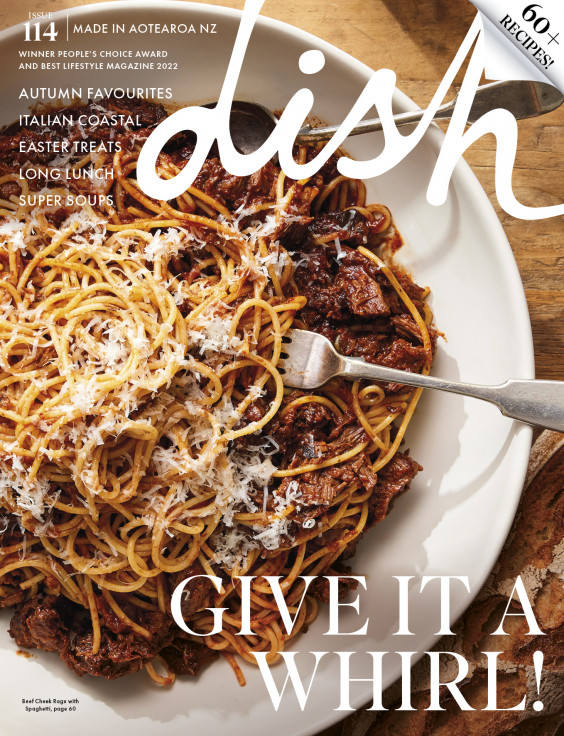Tasting Panel - Syrah
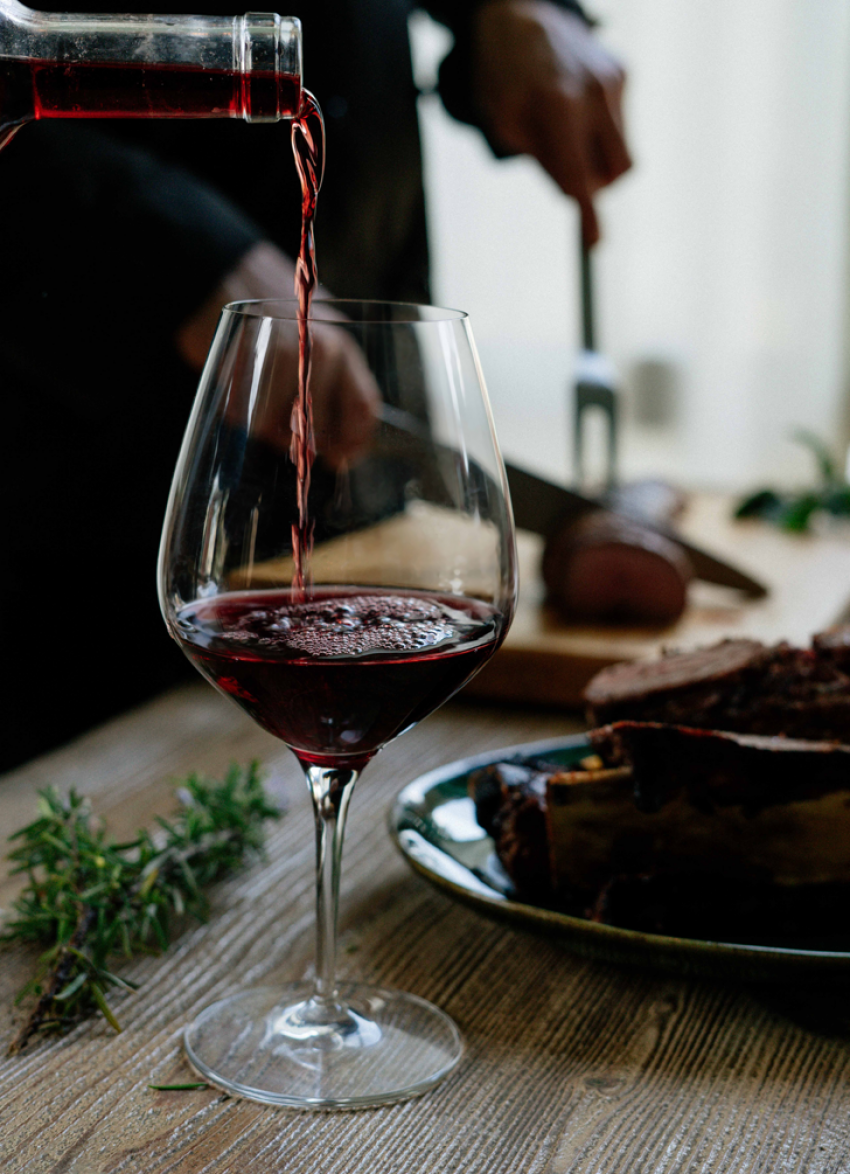
Our judges sip and swirl their way through a selection of bold, beguiling and beautifully complex syrahs to bring us their pick of the bunch
What is it about the cooling creep of autumn’s afternoon shadows and soft tick of the crockpot thermostat in winter that has us craving those addictively good violet-and pepper-scented syrahs? Maybe it’s because we’re becoming better acquainted with the styles our little country is capable of creating. Maybe it’s because it’s so seductively tasty when sipped with those sexy, saucy, recipes featuring duck, venison and all manner of gorgeous game. Who knows. All we at dish are concerned with is finding greatness out there that we can champion.
“I believe NZ syrah to be one of the unsung heroes of our wine sector,” says our judge Cameron Douglas MS. “They can be as beguiling, perfumed and complex as a fine pinot noir, but will always show muscle and power through bold tannins and a backbone of acidity”.
“I regard syrah as double-concentrated pinot noir and hence I love it,” agreed fellow judge Lynnette Hudson. “It has a similar structure to pinot noir; more robust tannins, but similar refreshing acidity”.
So it’s a style that’s very ‘now’. Like pinot noir, while there are bargains out there, for the most part great examples aren’t cheap. But according to Cameron, “syrah will never be as cheap as it is today compared to those from the northern hemisphere”.
Incidentally, shiraz and syrah are the same grape. The Aussies call it shiraz while in New Zealand and France it’s called syrah.
It’s a tricky grape to get right, because if left unchecked it’ll grow like a weed, so site selection and canopy management is key. It can also dramatically suffer from water and nutrition stress and it doesn’t like too much heat or excessive cold snaps of weather – they can bring ripening to a standstill. It needs a long growing season with enough heat to fully ripen and concentrate its flavours and textures, but also some coolness to encourage floral aromatics and acidity. Plus syrah has tight bunches making it highly vulnerable to disease in times of humidity. Fussy much?
Eleven of our top 12 wines hailed from Hawke’s Bay, reinforcing its place as syrah-na nirvana. Yet with an excellent example bursting through from the Bay of Islands, there’s reason to make noise about Northland as well. You’ll notice Stonecroft wines feature twice in our top of the tasting list as do Mills Reef. Stonecroft was the site of New Zealand’s first ever syrah vineyard, planted in the Gimblett Gravels in 1984 and released as a wine by Dr Alan Limmer back in 1989, while Mills Reef was also a syrah pioneer in the Gimblett Gravels, planting in the mid-1990s.
Wine lovers, well, love it, so why does it still lag behind merlot and cabernet in the sales stats? It’s an education thing, says Cameron. “Restaurant customers often default to pinot noir and red blends if they are unsure about syrah; and if the wait-staff don’t understand the variety and style, then there’s little point in having much syrah on the [wine] list”.
This is a crime against wine, according to dish drinks editor Yvonne Lorkin.
“New Zealand syrah comes in so many styles that it deserves time and effort from everyone in the wine and hospo trades to get their chops around it and develop an appreciation for it.
“I agree with Cameron when he says syrah is not a training wine though, and that it should deliver on power, concentration, muscle, complexity and palate presence. Happily our judging team found great examples featuring all those things.”
The best wines in our tasting show a fantastic combination of power, presence and finesse and it was incredibly difficult to separate the top two. So we didn’t. What is it about the cooling creep of autumn’s afternoon shadows and soft tick of the crockpot thermostat in winter that has us craving those addictively good violet- and pepper-scented syrahs? Maybe it’s because we’re becoming better acquainted with the styles our little country is capable of creating. Maybe it’s because it’s so seductively tasty when sipped with those sexy, saucy, recipes featuring duck, venison and all manner of gorgeous game. Who knows. All we at dish are concerned with is finding greatness out there that we can champion.
“I believe NZ syrah to be one of the unsung heroes of our wine sector,” says our judge Cameron Douglas MS. “They can be as beguiling, perfumed and complex as a fine pinot noir, but will always show muscle and power through bold tannins and a backbone of acidity”.
“I regard syrah as double-concentrated pinot noir and hence I love it,” agreed fellow judge Lynnette Hudson. “It has a similar structure to pinot noir; more robust tannins, but similar refreshing acidity”.
So it’s a style that’s very ‘now’. Like pinot noir, while there are bargains out there, for the most part great examples aren’t cheap. But according to Cameron, “syrah will never be as cheap as it is today compared to those from the northern hemisphere”.
Incidentally, shiraz and syrah are the same grape. The Aussies call it shiraz while in New Zealand and France it’s called syrah.
It’s a tricky grape to get right, because if left unchecked it’ll grow like a weed, so site selection and canopy management is key. It can also dramatically suffer from water and nutrition stress and it doesn’t like too much heat or excessive cold snaps of weather – they can bring ripening to a standstill. It needs a long growing season with enough heat to fully ripen and concentrate its flavours and textures, but also some coolness to encourage floral aromatics and acidity. Plus syrah has tight bunches making it highly vulnerable to disease in times of humidity. Fussy much?
Eleven of our top 12 wines hailed from Hawke’s Bay, reinforcing its place as syrah-na nirvana. Yet with an excellent example bursting through from the Bay of Islands, there’s reason to make noise about Northland as well. You’ll notice Stonecroft wines feature twice in our top of the tasting list as do Mills Reef. Stonecroft was the site of New Zealand’s first ever syrah vineyard, planted in the Gimblett Gravels in 1984 and released as a wine by Dr Alan Limmer back in 1989, while Mills Reef was also a syrah pioneer in the Gimblett Gravels, planting in the mid-1990s.
Wine lovers, well, love it, so why does it still lag behind merlot and cabernet in the sales stats? It’s an education thing, says Cameron. “Restaurant customers often default to pinot noir and red blends if they are unsure about syrah; and if the wait-staff don’t understand the variety and style, then there’s little point in having much syrah on the [wine] list”.
This is a crime against wine, according to dish drinks editor Yvonne Lorkin.
“New Zealand syrah comes in so many styles that it deserves time and effort from everyone in the wine and hospo trades to get their chops around it and develop an appreciation for it.
“I agree with Cameron when he says syrah is not a training wine though, and that it should deliver on power, concentration, muscle, complexity and palate presence. Happily our judging team found great examples featuring all those things.”
The best wines in our tasting show a fantastic combination of power, presence and finesse and it was incredibly difficult to separate the top two. So we didn’t.
TOP OF THE TASTING
1. Trinity Hill Wines L’Eritage Gimblett Gravels Syrah 2018($120)
★★★★★ Gold Medal (1st equal)
It’s testament to the talent in the team at Trinity Hill that this, a debut-release syrah, can swoop in and score a top spot. “It shows seductively dark blue fruit, white pepper and youthful, massive tannins,” said Lynnette, while Cameron was suitably wowed with its lovely nose and palate, and its savoury, spicy, fruity and peppery backbone. “It’s a wine with complexity and muscle, a superb ‘statement syrah’,” he adds. Yvonne agreed it was an incredibly pretty wine “with fresh peppercorn complexity, graphite, solid tannins, acidity, florals and hints of herbaceousness”. It’s got decades of life ahead to build complexity, and our judges agreed it’ll likely go on to become one of the absolute greats from the region.

1. Squawking Magpie SQM Gimblett Gravels Syrah 2013 ($79)
★★★★★ Gold Medal (1st equal)
This was the only entry from the mighty ‘vintage of the century’ 2013 harvest – and boy did it prove its pedigree. Only a small number of individually numbered bottles were made of this wine by Squawking Magpie’s freakishly talented winemaker Jenny Dobson. Yvonne loved how glossy, dark and inky in the glass it was, with highly floral spices, pepper, soft, plump tannins and excellent length, while Cameron was wowed by its dark fruits – “No mistaking the burst of oak here,” he said. “It’s firm, nicely structured, and shows incredible length.” Lynnette loved its salivating tannins, crunchy acidity and exotic spices.
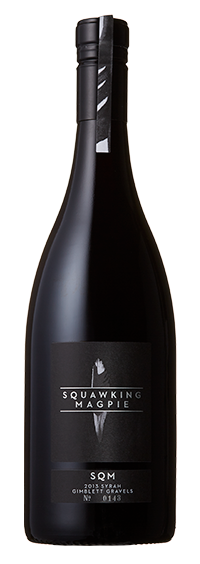
2. Stonecroft Undressed Gimblett Gravels Syrah 2019 ($31)
★★★★½ Silver Medal
“Beautifully balanced,” noted Yvonne, “with a strong baked raspberry, anise and white pepper character.” Our judges were all impressed with how perfumed this organically grown wine with no added sulphites (hence the ‘undressed’) was. When you add that to juicy, lush and sweet-fruited flavour, emery-like tannins and an elegant, youthful finish, that gives this wine great personality and drinkability.
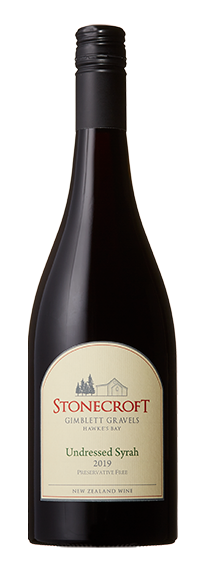
3. Mills Reef Reserve Gimblett Gravels Syrah 2018 ($24.95)
★★★★½ Silver Medal
An immediately impressive wine with beautiful inky purple-black colour, gorgeous rose petal and dark berry aromatics “and serious structure, density, ripeness and salivating tannins,” added Lynnette. Deliciously complex, with concentrated cedar and spice all cloaked in an elegant body and leaving a youthful blackcurrant-and cocoa-forward character on the finish. A seriously exciting and satisfying wine.
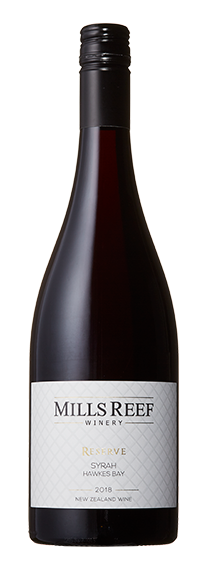
4. The Landing Bay of Islands Syrah 2015 ($39.99)
★★★★ Silver Medal
“A warm, generous wine with a solid fruit core, peppery, savoury edges and firm, chalky tannins,” noted Cameron. It oozes ripe blackcurrant, spices, sandalwood and liquorice and shows beautiful density and concentration on the palate. “Very nicely styled and generously proportioned,” added Yvonne. A memorable wine and one to watch.
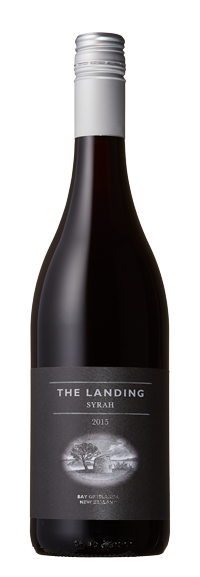
5. Mills Reef Elspeth Gimblett Gravels Syrah 2016 ($49.95)
★★★★ Silver Medal
“Seductive aromatics, smoky notes and elegance abound,” remarked Yvonne. “It is so bright, floral and peppery on the nose and has a solid, chunky, muscular mouthfeel and an enduring, textural finish.” The other judges agreed, both noting its attractive red fruits and rose-like florals. Tim Preston and Paul Dawick are the winemaking team behind Mills Reef and they’re absolutely, positively obsessed with syrah.
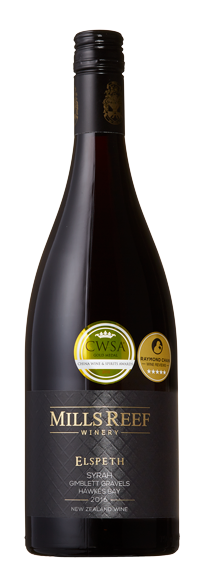
6. Stonecroft Serine Gimblett Gravels Syrah 2018 ($29)
★★★★ Silver Medal
Sourced from the famous Gimblett Gravels, it’s a toasty, oak-forward style (“almost ‘bacony’”, added Yvonne) and there is no mistaking the spicy, meaty notes and plum and liquorice flavours. A touch of dried herb adds real character to this organically grown stunner. Cameron loved the fruitcake aromas and its big, bold tannins.
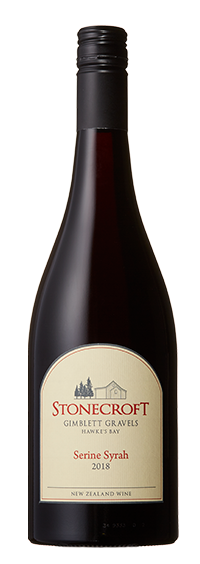
7. Hopesgrove Estate Single Vineyard Hawke’s Bay Syrah 2018 ($40)
★★★★ Silver Medal
Our judges all commented on the lovely saturated purple colour and vibrant, floral and spicy freshness on the nose. Solid fruit weight and elegant handling of tannins and alcohol also made a real impression. Lynnette noted it had “beautiful oak seasoning and fine, sandy tannins”.
“A sound, youthful expression,” added Cameron. It’s hand-picked, fermented in small, open-topped vessels, hand-plunged twice daily then aged for 20 months in 35 per cent new French barrels. Lovely stuff.
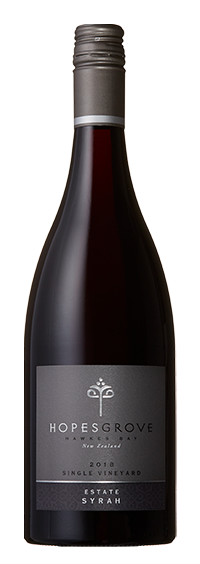
8. Smith & Sheth CRU Heretaunga Syrah 2018 ($40)
★★★★ Silver Medal
Sourced from 15-year-old syrah vines growing in the deep, stony, riverbed soils of the Gimblett Gravels. Inky-bright in the glass, the aromas of blackberries on charred toast merge with dusty, yet caramelised oak and cocoa characters and there’s a dusting of black pepper linking the florals, fruit and spice. The finish is long, persistent and “brooding”, said our judges. A very sexy wine with serious cellaring potential.
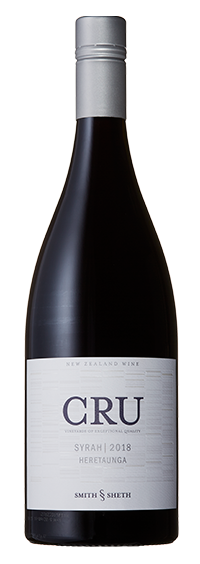
9. Hāhā Estate Hawke’s Bay Syrah 2018 ($24.99)
★★★★ Silver Medal
It’s incredibly exciting to see wines like this being revealed as big winners because it proves that dedication and attention to detail in the vineyard and winery can produce an affordable, seriously drinkable syrah. It has elegance, poise, shedloads of floral, berry and spice character and is an extremely pretty colour. Its medicinal notes on the nose and a lush, darkly fruited, beautifully structured palate make this a must-sip.

10. Paritua Hawke’s Bay Syrah 2018 ($49)
★★★★ Silver Medal
Shepherded into the bottle by star Bridge Pā winemaker Jason Stent, this wine has fantastic dusty, carpenter’s workshop aromas clothed in fresh, lifted spices, violets and dark fruit. In the mouth it has finely tuned oak and generous complexity, oozing “cola, coffee bean, black fruits and has great concentration”, noted Yvonne. Cameron also felt it also boasted cherry and red apple complexity. It’s a serious wine for one so young and will reward time in the cellar
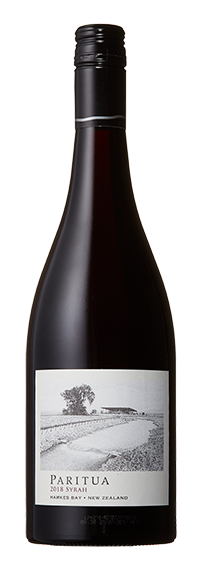
11. Te Awanga Estate The Loom Reserve Hawke’s Bay Syrah 2018 ($39.99)
★★★★ Silver Medal
Loaded with youthful currant, plum and black fruit aromas alongside, according to Yvonne, “well-handled oak, reminiscent of old car leather – nice!”. Cameron also enjoyed the “dusty tannins and toast-centric bouquet,” and Lynnette was impressed with its depth, concentration and fleshy texture. Yvonne also loved its “oyster sauce richness” and all judges agreed it was a very, very interesting, rewarding wine.
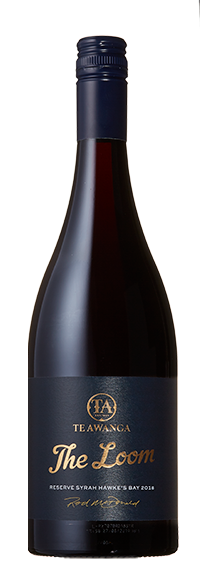
Look for the Dish Tasting Panel selection sticker, which can be worn by our top wines.
With thanks to Janet Blackman from the Professional Wine Studies Department and the AUT School of Hospitality and Tourism. For more on the programmes in hospitality, food and beverage, and hotel management, visit aut.ac.nz. Water kindly supplied by Antipodes and glasses by Spiegelau. 
latest issue:
Issue #114
Autumn has arrived, and with it, the latest issue of dish, jam-packed with recipes that will have you fizzing to get in the kitchen! With a long Easter lunch featuring perfectly pink, blushing roast leg of lamb and wildly decadent baked mashed potatoes with caramelised onions, to simply scrumptious chocolate treats and sensational seasonal baking this issue has you covered - we reckon the Hot Cross Buns are our best yet! Salads make way for soothing soups, pies, puddings and our cover star beef cheek ragù with spaghetti – a must-make dinner for family and friends. With over 60 recipes in our latest issue there’s plenty of inspiration to keep you busy – and well-fed! Don’t forget to share your dish dishes with our Facebook community.

